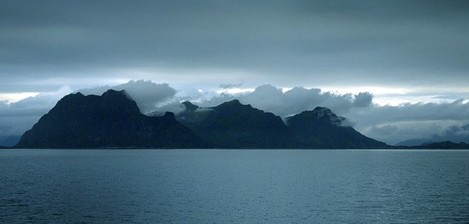Fairy islands are mythological islands where endless spring and happiness is. Ageing and sickness in unheard of. Somesay they float, some are underwater and come above surface at night and some are visible only at special occasions.
Among the best known are the Isles of the Blest (a/k/a Fortunate Islands), Tir Nan Og (the Land of the Young), Tirfo Thuinn (the Land Under the Waves), Tire Nam Beo (Land of the Living), Tirn Aill (the Other World), Mag Mor (the Great Plain), Mag Mell (the Pleasant Plain), and Tir Tairngire (the Plain of Happiness).

Tír-na-n-Og: There is a country called Tír-na-n-Og, which means the Country of the Young, for age and death have not found it; neither tears nor loud laughter have gone near it. According to many stories, Tír-na-n-Og: is the favourite dwelling of the fairies. Some say it is triple-the island of the living, the island of victories, and an underwater land. The shadiest boskage covers it perpetually. One man has gone there and returned. The bard, Oisin, who wandered away on a white horse, moving on the surface of the foam with his fairy Niamh, lived there three hundred years, and then returned looking for his comrades. The moment his foot touched the earth his three hundred years fell on him, and he was bowed double, and his beard swept the ground. He described his sojourn in the Land of Youth to Patrick before he died.
The Isle of Apples: known as Avalon in the Arthurian mythos (often equated with Ablach Emain). Here we find the Silver Bough that allowed a living mortal to enter and withdraw from the Otherworld or Land of the Gods. According to legend, the Fairy Queen sometimes offered the branch to worthy mortals, granting them safe passage and food during their stay.
Another medieval writer described Avalon, which meant the isle of apples, with the following words:
‘Avalon, which men call the Fortunate Isle, is so named because it produces all things of itself. The fields there have no need of farmers to plow them, and nature alone provides all cultivation. Grains and grapes are produced without tending, and apple trees grow in the woods from the close-clipped grass…Thither after the battle of Camlan we took the wounded Arthur…with the Prince we arrived there and Morgan receved us with becoming honour. In her own chamber she placed the King on a golden bed, with her own hand uncovered the wound, and gazed at it long. At last she said that health could return to him, if her were to stay with her for a long time and wished to make use of her healing art.’
Ys is a mythical city that was built on the coast of Brittany and later swallowed by the ocean. Most versions of the legend place the city in the Douarnenez Bay.
Pembrokshire Coast : the Welsh thought it to be an invisible island in the Irish Channel just off this coast
Hy Breasail : elusive island to the west of Ireland
A Dutch pilot, settled in Dublin, told M. De La Boullage Le Cong, who travelled in Ireland in 1614, that round the poles were many islands; some hard to be approached because of the witches who inhabit them and destroy by storms those who seek to land. He had once, off the coast of Greenland, in sixty-one degrees of latitude, seen and approached such an island only to see it vanish. Sailing in an opposite direction, they met with the same island, and sailing near, were almost destroyed by a furious tempest.
